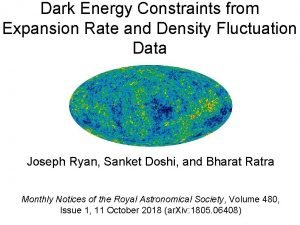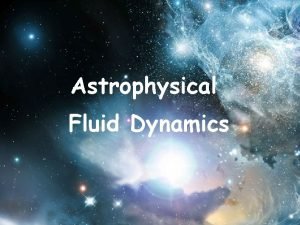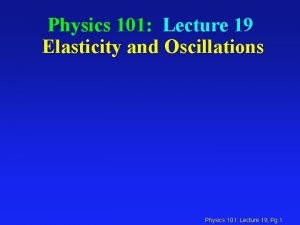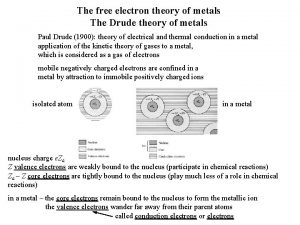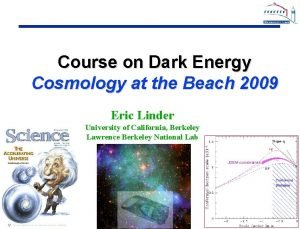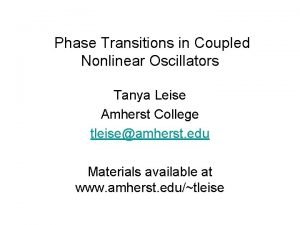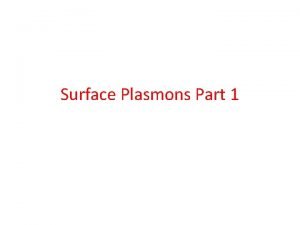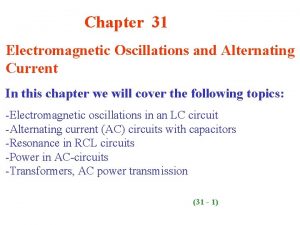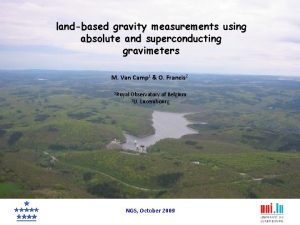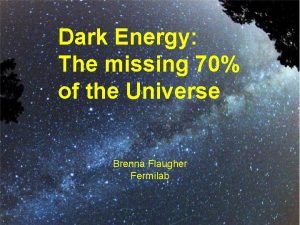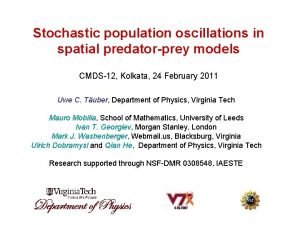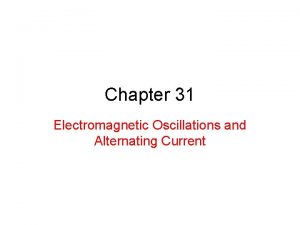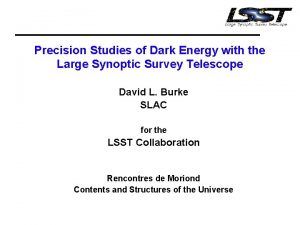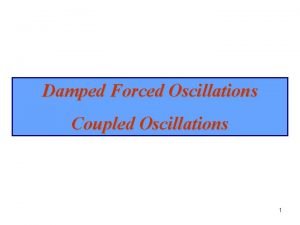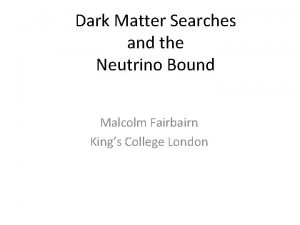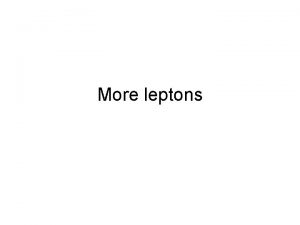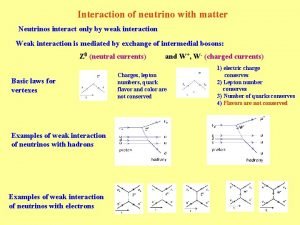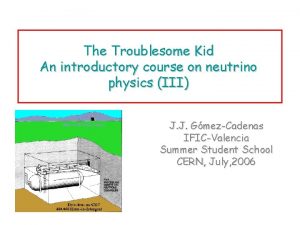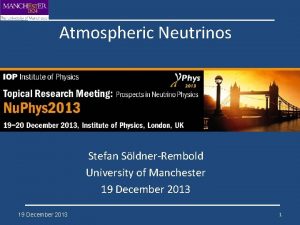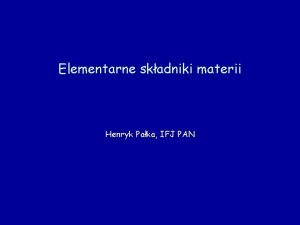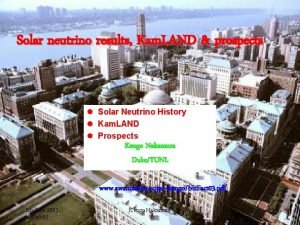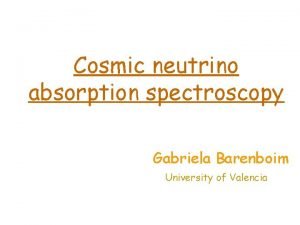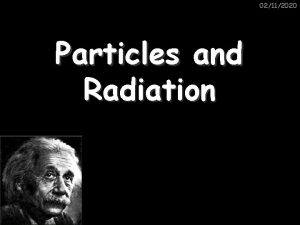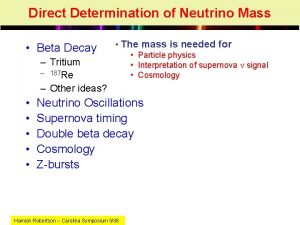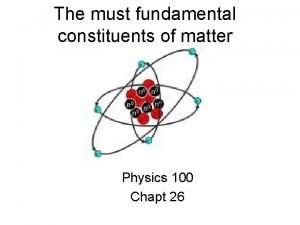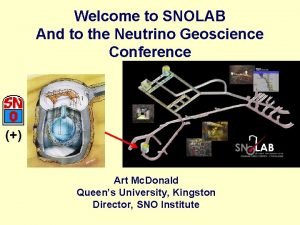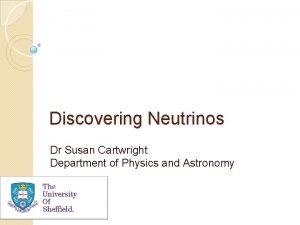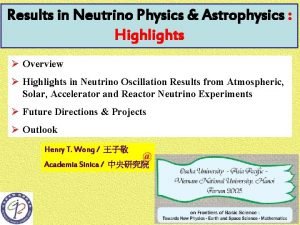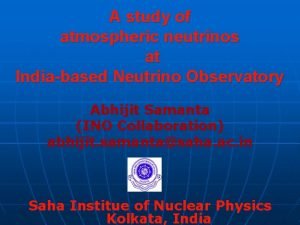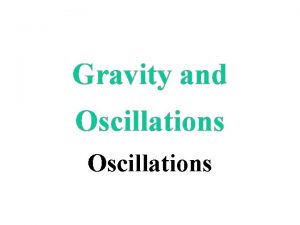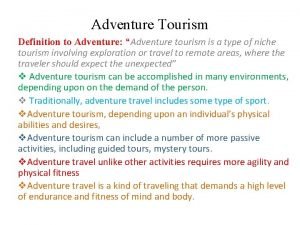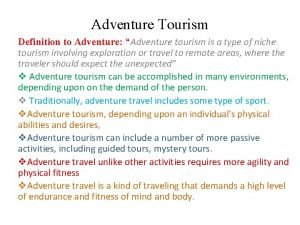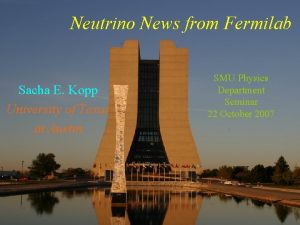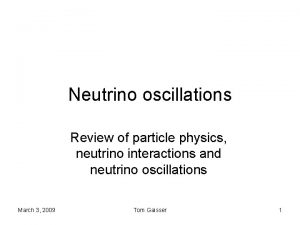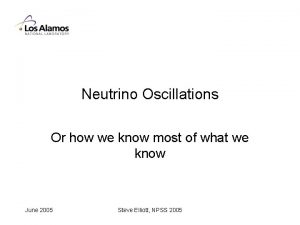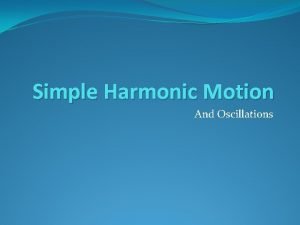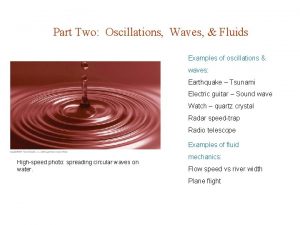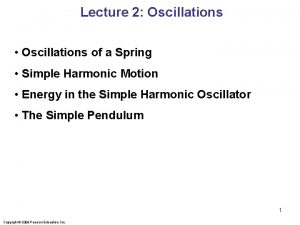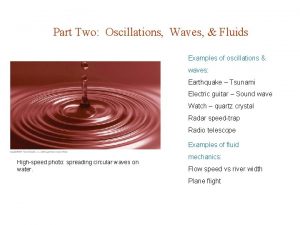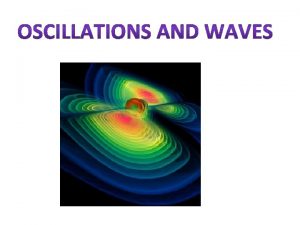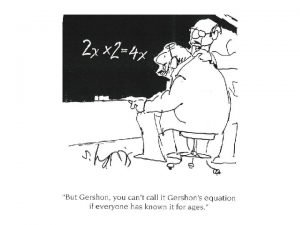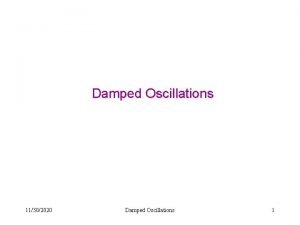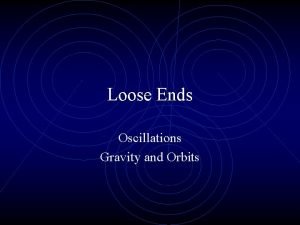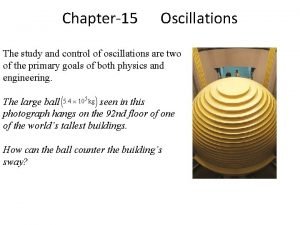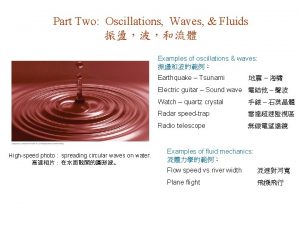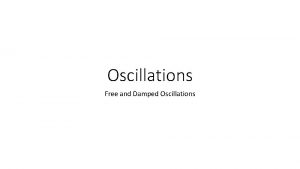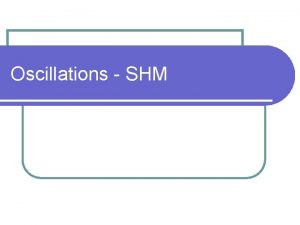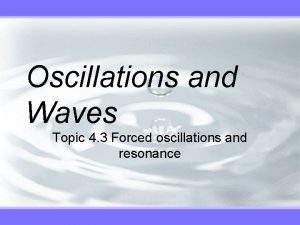1 Neutrino Oscillations The most exciting Adventure in














![Solar Neutrinos ( e) [Looking at the sky from underground] The Sun as seen Solar Neutrinos ( e) [Looking at the sky from underground] The Sun as seen](https://slidetodoc.com/presentation_image_h2/bc6a15381ac5388a7920b26617de9e26/image-15.jpg)














- Slides: 29

1 Neutrino Oscillations [The most exciting “Adventure in Physics” of the last ten years ] Gianluigi Fogli Università di Bari “Laurea ad Honorem” to Prof. Masatoshi Koshiba

Outline • A few historical notes • Neutrino oscillations • Open problems • Conclusions Gianluigi Fogli Bologna, June 17, 2005 2

75 years ago (1930), Wolfgang Pauli suggests the existence of a new small particle as “desperate remedy” to interpret the continuous spectrum of -decay First kinematical properties: spin 1/2, small mass, no charge Gianluigi Fogli Bologna, June 17, 2005 3

A few years after (1933 -34), the new particle is “baptized” neutrino ( ) by Enrico Fermi, with a first attempt of describing its dynamical properties (weak interactions) e GF (Fermi constant) n Gianluigi Fogli p Bologna, June 17, 2005 4

Today, after more than 70 years, several further properties have been discovered. In particular, neutrinos appear in three different “flavors”, together with the corresponding leptons (e, , ) Moreover, we know that Fermi interaction proceeds through the exchange of charged vector bosons W, or a neutral vector boson Z Charged current ( q=1) Neutral current ( q=0) Gianluigi Fogli Bologna, June 17, 2005 5

However, in spite of many considerable progresses, only recently it has been possible to attempt of answering some of the fundamental questions asked in the past century: How small is the neutrino mass ? (Pauli, Fermi, in the thirties) Can a neutrino transform into its antiparticle ? (Majorana, in the thirties) Can a neutrino of a given flavor transform into a neutrino of a different flavor (“oscillate”) ? (Pontecorvo, Maki-Nakagawa-Sakata, in the sixties) In particular, as we will see, it is possible to answer positively and with well-constructed arguments to the third question. Gianluigi Fogli Bologna, June 17, 2005 6

Flavor oscillations of neutrinos In the centenary of the “annus mirabilis”, we cannot avoid to start from the well-known equation … … i. e. , if p 0: Gianluigi Fogli Bologna, June 17, 2005 7

In general, for massive particles, we adopt the limit … conversely, for neutrinos, the appropriate limit is This means that the difference in energy of two neutrinos i and j of masses mi and mj in the same beam is given by Pontecorvo: neutrinos of different mass ( i, j) can mix to form neutrinos of given flavor ( , ) Gianluigi Fogli Bologna, June 17, 2005 8

What happens is a typical quantum-mechanical effect: (flavor oscillation) This is the simplest case, with only two neutrinos involved and negligible interaction effects. It is really surprising that this is just the case that takes place - at a good level of approximation - in the phenomenology of atmospheric neutrinos, where the previous simple formula for P justifies data on ~ 7 orders of magnitude in L/E in the Super-Kamiokande experiment (as well as in MACRO and Soudan 2). Gianluigi Fogli Bologna, June 17, 2005 9

Super. Kamiokande Events induced by e: ~ as expected Events induced by : deficit from below e oscillations? No (or subdominant) oscillations? Yes (dominant) Gianluigi Fogli Bologna, June 17, 2005 10

Atmospheric neutrinos: Super-Kamiokande Sub-Ge. V electrons Multi-Ge. V electrons Sub-Ge. V muons Multi-Ge. V muons Upward Stopping muons Upward Through-going muons 41. 4 m SGe MGe SG MG US UT 39 m electrons ~ OK no oscillation up Gianluigi Fogli down muon deficit from below Bologna, June 17, 2005 11

The first half-cycle and the first dip begin to appear with high statistics. The poor resolution for large L/E does not allow to see a complete oscillation (averaged oscillations). Strong limits on the mass-mixing parameters ( m 2, ) are derived. Limits symmetrical in the two octants in the case of pure oscillations. Preferred value ~ /4: very large when compared with the quark mixing. Gianluigi Fogli Bologna, June 17, 2005 12

More on atmospheric oscillations: We begin to be sensitive to subdominant effects parameters confirmed by accelerator (K 2 K) Note: 1) linear scale in m 2 and sin 2 23; 2) asymmetry in the 23 octants. Gianluigi Fogli Bologna, June 17, 2005 13

A missing element: appearance It will be studied in two experiments OPERA, ICARUS in construction at the Laboratori Nazionali del Gran Sasso with a neutrino beam coming from CERN Gianluigi Fogli Bologna, June 17, 2005 14
![Solar Neutrinos e Looking at the sky from underground The Sun as seen Solar Neutrinos ( e) [Looking at the sky from underground] The Sun as seen](https://slidetodoc.com/presentation_image_h2/bc6a15381ac5388a7920b26617de9e26/image-15.jpg)
Solar Neutrinos ( e) [Looking at the sky from underground] The Sun as seen with neutrinos (SK) Earth’s orbit as seen with neutrinos (SK) Gianluigi Fogli Bologna, June 17, 2005 15

The solar neutrino deficit: 50 years of research Gallex/GNO Davis & Bahcall Gianluigi Fogli Bologna, June 17, 2005 16

Fundamental difference between atmospheric (~ ) and solar ( e , ) neutrino oscillations: e in the Sun interacts with the e- of the solar matter (CC interaction) Difference of interaction energies: [Mikheyev-Smirnov-Wolfenstein (MSW), ‘ 70 -’ 80] Gianluigi Fogli Bologna, June 17, 2005 17

Impressive reduction of the parameter space ( m 2, 12) in the years 2001 -2003 (note the different scales !) Cl+Ga+SK (2001) +SNO-I (2001 -2002) +Kam. LAND-I (2002) +SNO-II (2003) Standard Solar Model confirmed Direct proof of e , in SNO from the comparison of Gianluigi Fogli Bologna, June 17, 2005 18

Sudbury Neutrino Observatory 1000 tons of deuterium (available only in Canada) then: SNO, 2002: CC/NC ~ 1/3 Model-independent evidence of “flavor changing” effect ! Gianluigi Fogli Bologna, June 17, 2005 19

Kam. LAND: 1000 tons of mineral oil, “surrounded” by nuclear reactors (L~100 -200 km, E ~ a few Me. V) 2002: Gianluigi Fogli Bologna, June 17, 2005 20

Nobel 2002 1905: annus mirabilis for physics (in general) 2002: annus mirabilis for solar neutrino physics (from: G. L. F. , E. Lisi, A. Marrone, D. Montanino, A. Palazzo, A. M. Rotunno, hep-ph/0212127) Gianluigi Fogli Bologna, June 17, 2005 21

… 2004: a unique solution well identified (Large Mixing Angle) + evidence for a half-cycle of oscillation in Kam. LAND What can we say about the MSW effect ?

An exercise: 1. 2. 3. Let the MSW potential be parameterized as V(x) a. MSWV(x) Consider all the data with ( m 2, 12, a. MSW) free Marginalize ( m 2, 12) and check if a. MSW ~ 1 (… how to “measure” GF through solar neutrino oscillations…) Results: with the 2004 data a. MSW ~ 1 within a factor ~ 2 a. MSW ~ 0 excluded Clear evidence for the MSW effect in the solar matter Gianluigi Fogli Bologna, June 17, 2005 [However, subdominant MSW effects expected from the Earth crossing (day-night effect) are still too small with respect to the experimental uncertainties. ] 23

2005 (three months ago): new important results from SNO Solar Previous results confirmed Ratio CC/NC ~ P( e e) slightly higher Solar+KL Small change of 12 (<1 ) towards higher values 2004 Gianluigi Fogli 2005 Bologna, June 17, 2005 24

State-of-the-art (2004 data, ± 2 errors) Gianluigi Fogli Bologna, June 17, 2005 25

All the experiments indicate 13 small or zero (in particular CHOOZ with reactor neutrinos) A non trivial consistency, which makes difficult future research…. Gianluigi Fogli Bologna, June 17, 2005 26

Conclusions Impressive progresses in the recent years … Non-zero neutrino masses and mixings Determination of ( m 2, 12) and ( m 2, 23) Upper limits on 13 Spectral distortions induced by oscillations Direct evidence for solar oscillations Evidence of MSW effect in the Sun Upper limits on m of order (sub)e. V ………… Determination of 13 CP violation in the leptonic sector Absolute masses from -decay and cosmology Test of controversial signals (0 2 , LSND) MSW effect from Earth matter Normal vs. inverted hierarchies Physics beyond the standard 3 scenario A deeper theoretical understanding ………… Gianluigi Fogli Bologna, June 17, 2005 … and great challenges in the future 27

A lot of work is still to be done in neutrino physics … Gianluigi Fogli Bologna, June 17, 2005 28

38
 Baryon acoustic oscillations
Baryon acoustic oscillations Baryonic acoustic oscillations
Baryonic acoustic oscillations Elasticity and oscillations
Elasticity and oscillations Plasma oscillations
Plasma oscillations Baryon acoustic oscillations
Baryon acoustic oscillations Tanya leise amherst
Tanya leise amherst Mobilization grades
Mobilization grades Plasma oscillations
Plasma oscillations Electromagnetic oscillations and alternating current
Electromagnetic oscillations and alternating current Slow oscillations
Slow oscillations The universe expanding faster than
The universe expanding faster than Oscillations
Oscillations Electromagnetic oscillation pdf
Electromagnetic oscillation pdf Baryon acoustic oscillations
Baryon acoustic oscillations Coupled oscillations
Coupled oscillations Neutrino
Neutrino Leptons
Leptons Neutrino interaction with matter
Neutrino interaction with matter Neutrino
Neutrino Neutrino
Neutrino Lekka cząstka elementarna mion elektron lub neutrino
Lekka cząstka elementarna mion elektron lub neutrino Nakamura
Nakamura Neutrino density
Neutrino density Neutrino lepton number
Neutrino lepton number Neutrino mass
Neutrino mass Neutrino symbol
Neutrino symbol Solar neutrino
Solar neutrino Dr susan cartwright
Dr susan cartwright Neutrino mass
Neutrino mass Neutrino
Neutrino
